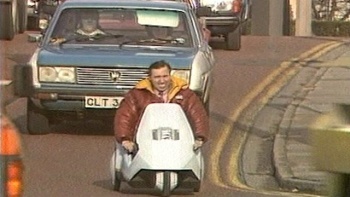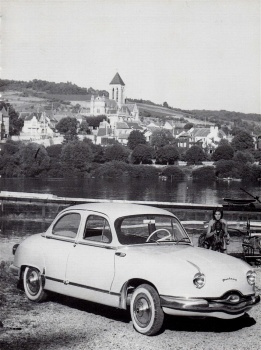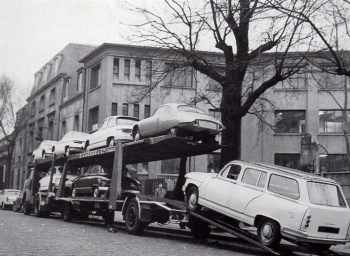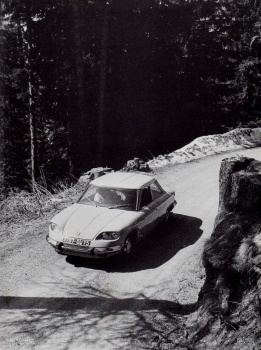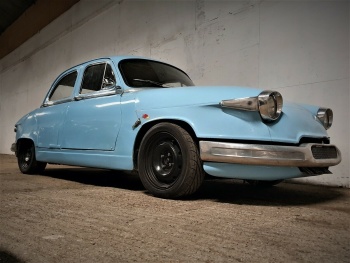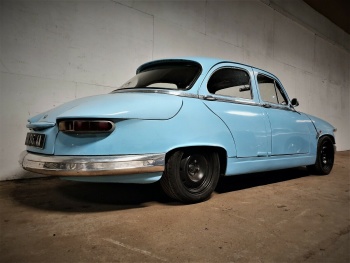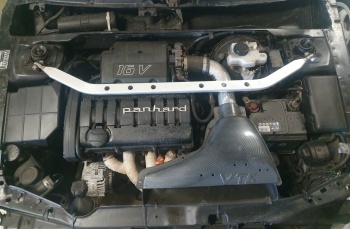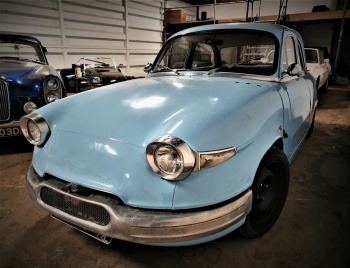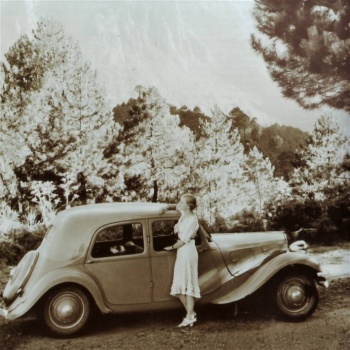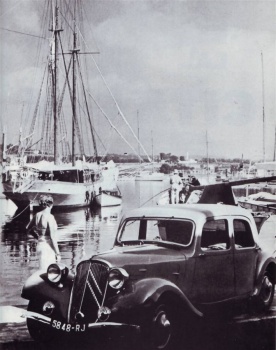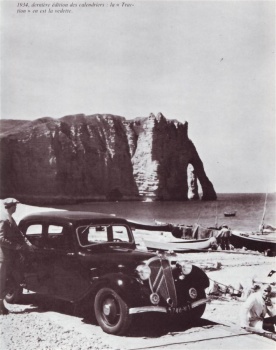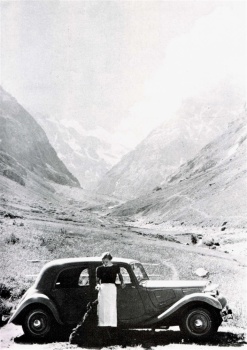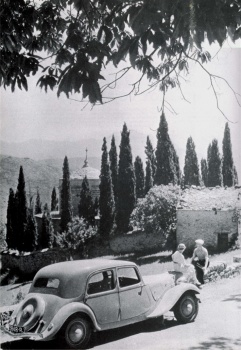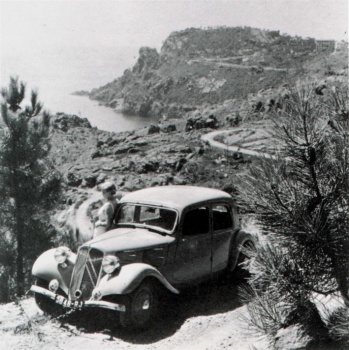-
You are currently viewing our forum as a guest which gives you limited access.
By joining you will gain full access to thousands of Videos, Pictures & Much More.
Membership is absolutely FREE and registration is FAST & SIMPLE so please, Register Today and join one of the friendliest communities on the net!
You must be at least 18 years old to legally access this forum. -
Hello Guest,
Thanks for remaining an active member on GayHeaven. We hope you've enjoyed the forum so far.
Our records indicate that you have not posted on our forums in several weeks. Why not dismiss this notice & make your next post today by doing one of the following:
- General Discussion Area - Engage in a conversation with other members.
- Gay Picture Collections - Share any pictures you may have collected from blogs and other sites. Don't know how to post? Click HERE to visit our easy 3-steps tutorial for picture posting.
- Show Yourself Off - Brave enough to post your own pictures or videos? Let us see, enjoy & comment on that for you.
- Gay Clips - Start sharing hot video clips you may have. Don't know how to get started? Click HERE to view our detailed tutorial for video posting.
Active and contributing members will earn special ranks. Click HERE to view the full list of ranks & privileges given to active members & how you can easily obtain them.
Please do not flood the forum with "Thank you" posts. Instead, please use the "thanks button"
We Hope you enjoy the forum & thanks for your efforts!
The GayHeaven Team.
You are using an out of date browser. It may not display this or other websites correctly.
You should upgrade or use an alternative browser.
You should upgrade or use an alternative browser.
Classic Cars
- Thread starter waistingmytime
- Start date
dargelos
Super Vip
- Joined
- Feb 18, 2011
- Messages
- 1,868
- Reaction score
- 391
- Points
- 83
The smallest ever road legal car was this one, the Peel 50 three wheeler, made in the years 1962 t0 1965.
The number 50 refered to the engine size, 49cc, so not at all fast, only one seat and enough luggage space for a newspaper and a packet of cigarettes. No radio, no heater, just transport at it's most basic.
http://imgbox.com/A4KabYQ0

If you want one, a company is remanufacturing them today and they are being bought. The small glass fibre cabin acts as a resonator, making the engine sound louder inside than outside. Now there is an electric option which solves the noise problem. Range on batteries is about 100 miles, which is further than you would ever want to travel in so much discomfort.
The number 50 refered to the engine size, 49cc, so not at all fast, only one seat and enough luggage space for a newspaper and a packet of cigarettes. No radio, no heater, just transport at it's most basic.
http://imgbox.com/A4KabYQ0

If you want one, a company is remanufacturing them today and they are being bought. The small glass fibre cabin acts as a resonator, making the engine sound louder inside than outside. Now there is an electric option which solves the noise problem. Range on batteries is about 100 miles, which is further than you would ever want to travel in so much discomfort.
jeanlouis
V.I.P Member
- Joined
- May 22, 2009
- Messages
- 13,549
- Reaction score
- 25,310
- Points
- 113
A little bigger, the Rayonnah 1950, two seats in tandem, engine 175 cm3 at the rear.

Special feature : a folding front axle to save place in parking !

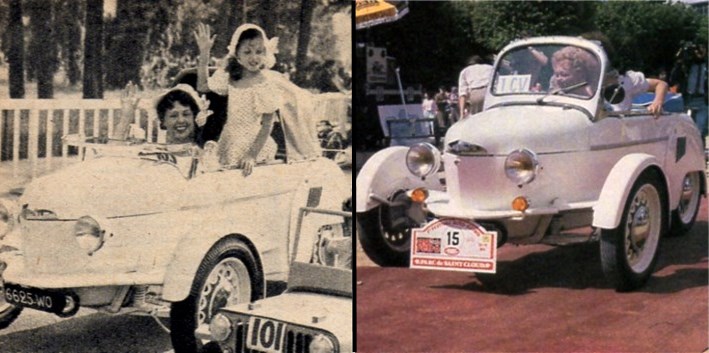
The popular actress Paulette Dubost presented the Rayonnah at an elegance contest in 1952 with her daughter behind. She presented again the same "car" 33 years later at the first "Auto-Retro Festival" managed by a specialized magazine. She wanted to promote this model, unsuccessfully, only one was assembled

Special feature : a folding front axle to save place in parking !


The popular actress Paulette Dubost presented the Rayonnah at an elegance contest in 1952 with her daughter behind. She presented again the same "car" 33 years later at the first "Auto-Retro Festival" managed by a specialized magazine. She wanted to promote this model, unsuccessfully, only one was assembled
Last edited:
jeanlouis
V.I.P Member
- Joined
- May 22, 2009
- Messages
- 13,549
- Reaction score
- 25,310
- Points
- 113
3 other micro-cars for our big metropolis

Unipower Quasar - 1968 - Nearly the perfect cube : 198x168x188 cm
Morris 1100 engine at the rear



Minima - 1973 - 240x150 cm - Citroën flat-twin type Ami 8 (602 cm3) at the rear

William 500 - 1973 - 220x127 cm (305x140 cm for the Austin mini) - Fiat 500 bicylinder at the rear
So short, you can park it perpendiculary to the pavement
As usual only the high price prevented the production of these unconventional models. Austin and Fiat could sleep quietly!

Unipower Quasar - 1968 - Nearly the perfect cube : 198x168x188 cm
Morris 1100 engine at the rear



Minima - 1973 - 240x150 cm - Citroën flat-twin type Ami 8 (602 cm3) at the rear

William 500 - 1973 - 220x127 cm (305x140 cm for the Austin mini) - Fiat 500 bicylinder at the rear
So short, you can park it perpendiculary to the pavement
As usual only the high price prevented the production of these unconventional models. Austin and Fiat could sleep quietly!
Last edited:
dargelos
Super Vip
- Joined
- Feb 18, 2011
- Messages
- 1,868
- Reaction score
- 391
- Points
- 83
Still on the subject of small cars that sold badly, Sir Clive Sinclair made a fortune selling his computers and lost it failing to sell this thing in 1985.
The C5 was a trike driven by a 12v battery, so ahead of it's time. It was seen by the public as unsafe, this was more the fault of bad car drivers than the C5 itself. Once shit sticks though, it stays stuck so thousands of these trikes remained unsold.
Today there are enthusiasts fitting them with new state of the art batteries and motors so they can run them at crazy speeds.They are also useful for anyone who gets busted for drunk driving, they can still be legaly driven after your licence has been revoked.
The C5 was a trike driven by a 12v battery, so ahead of it's time. It was seen by the public as unsafe, this was more the fault of bad car drivers than the C5 itself. Once shit sticks though, it stays stuck so thousands of these trikes remained unsold.
Today there are enthusiasts fitting them with new state of the art batteries and motors so they can run them at crazy speeds.They are also useful for anyone who gets busted for drunk driving, they can still be legaly driven after your licence has been revoked.
dargelos
Super Vip
- Joined
- Feb 18, 2011
- Messages
- 1,868
- Reaction score
- 391
- Points
- 83
There is this 1959 PL 17 on sale at ebay, she's pretty and I would be interested in buying.
Trouble is, the engine has been replaced by a modern 160 bhp unit. I don't mind that it is new but the increase in power takes the car out of the classic category and into the high performance category which means much higher insurance, and makes it liable for mot testing and road tax. Too much extra expense and hassle so I'm afraid I won't be making her aquaintance.
Trouble is, the engine has been replaced by a modern 160 bhp unit. I don't mind that it is new but the increase in power takes the car out of the classic category and into the high performance category which means much higher insurance, and makes it liable for mot testing and road tax. Too much extra expense and hassle so I'm afraid I won't be making her aquaintance.
jeanlouis
V.I.P Member
- Joined
- May 22, 2009
- Messages
- 13,549
- Reaction score
- 25,310
- Points
- 113
there is this 1959 pl 17 on sale at ebay, she's pretty and i would be interested in buying.
trouble is, the engine has been replaced by a modern 160 bhp unit. I don't mind that it is new but the increase in power takes the car out of the classic category and into the high performance category which means much higher insurance, and makes it liable for mot testing and road tax. Too much extra expense and hassle so i'm afraid i won't be making her aquaintance.
OMG ! X_X
Except the body form, there is nothing from a Panhard 17 here !
Last edited:
jeanlouis
V.I.P Member
- Joined
- May 22, 2009
- Messages
- 13,549
- Reaction score
- 25,310
- Points
- 113
RENAULT

Louis Renault (1877-1944) at the wheel of his first car entirely handmade in 1898. De Dion engine

Renault Frères 4 HP - 1900


Type AX - 1908

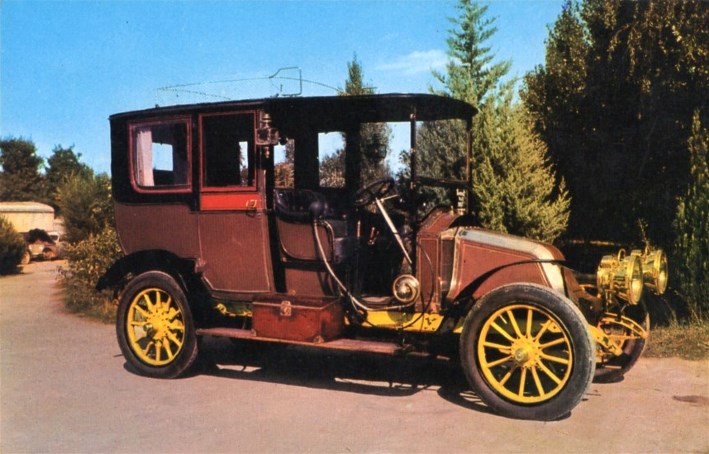

Historic "Taxi de la Marne" - around 1908-1912

Type EU - 1919


40 HP - 1923

Type NN - 1928 - Until 1929 all the Renault had a specific bonnet form ("aligator" bonnet) and the radiator behind the motor.

Vivasport - 1934

Primaquatre Sport - 1939

Juvaquatre saloon 4 doors - 1939 then 1945-1948
This model was the only kept by the new nationalized company RNUR (Régie Nationale des Usines Renault) created after Louis Renault tragedy. The original 2 doors version 1938 was a copy of the Opel Kadett. The utilitary version was made until 1960 under the name Dauphinoise with a 4CV then Dauphine mechanical.

Louis Renault (1877-1944) at the wheel of his first car entirely handmade in 1898. De Dion engine

Renault Frères 4 HP - 1900


Type AX - 1908



Historic "Taxi de la Marne" - around 1908-1912

Type EU - 1919


40 HP - 1923

Type NN - 1928 - Until 1929 all the Renault had a specific bonnet form ("aligator" bonnet) and the radiator behind the motor.

Vivasport - 1934

Primaquatre Sport - 1939

Juvaquatre saloon 4 doors - 1939 then 1945-1948
This model was the only kept by the new nationalized company RNUR (Régie Nationale des Usines Renault) created after Louis Renault tragedy. The original 2 doors version 1938 was a copy of the Opel Kadett. The utilitary version was made until 1960 under the name Dauphinoise with a 4CV then Dauphine mechanical.
Last edited:
jeanlouis
V.I.P Member
- Joined
- May 22, 2009
- Messages
- 13,549
- Reaction score
- 25,310
- Points
- 113
Renault models after war

Frégate Affaires - 1952


4 CV Sport - 1954

Dauphine - 1956

Dauphine - 1958

R 8 Major 1100 - 1964
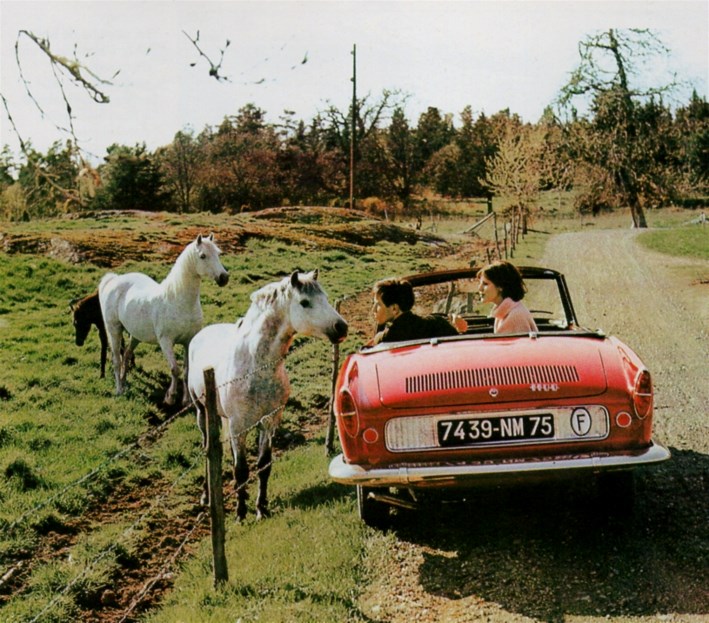

Caravelle 1100 - 1964

Dauphine - 1964

R 10 Major - 1965


R 8 Gordini 1300 - 1967

R 10 1300 - 1970

R 8 and R 10 with rear engine are still inside the Renault range in early seventies beside Alpine Berlinette A110 waiting for A310

Frégate Affaires - 1952


4 CV Sport - 1954

Dauphine - 1956

Dauphine - 1958

R 8 Major 1100 - 1964


Caravelle 1100 - 1964

Dauphine - 1964

R 10 Major - 1965


R 8 Gordini 1300 - 1967

R 10 1300 - 1970

R 8 and R 10 with rear engine are still inside the Renault range in early seventies beside Alpine Berlinette A110 waiting for A310
jeanlouis
V.I.P Member
- Joined
- May 22, 2009
- Messages
- 13,549
- Reaction score
- 25,310
- Points
- 113
From R4 to R30, Renault Front Wheels Drive models

4 L - 1969

5 TL - 1972

5 Turbo - 1980 - rare model : 2 seats only, central engine and Rear Wheels Drive

Super 5 GT Turbo - 1986

6 TL - 1971

7 - 1975 - Spanish version of the Renault 5 with external trunk

9 GTL - 1981

11 TXE - 1985

12 TL - 1970

14 TL - 1976

15 TS - 1972

16 TS - 1973

17 TS - 1976

18 GTS - 1978

19 GTS - 1988

19 convertible - 1991

20 TL - 1976

21 TSE - 1986

25 TXE - 1988

30 TS - 1975
Did you notice ? There is no Renault 13 !

4 L - 1969

5 TL - 1972

5 Turbo - 1980 - rare model : 2 seats only, central engine and Rear Wheels Drive

Super 5 GT Turbo - 1986

6 TL - 1971

7 - 1975 - Spanish version of the Renault 5 with external trunk

9 GTL - 1981

11 TXE - 1985

12 TL - 1970

14 TL - 1976

15 TS - 1972

16 TS - 1973

17 TS - 1976

18 GTS - 1978

19 GTS - 1988

19 convertible - 1991

20 TL - 1976

21 TSE - 1986

25 TXE - 1988

30 TS - 1975
Did you notice ? There is no Renault 13 !
Last edited:
jeanlouis
V.I.P Member
- Joined
- May 22, 2009
- Messages
- 13,549
- Reaction score
- 25,310
- Points
- 113
DKW, Saab, Trabant, Wartburg, the last models with two-stroke cycle engine
DKW was a trademark of the group Auto-Union, one of the four rings of the logo. Audi, Horch and Wanderer were the three other. DKW, the pioneer of the Front Wheels Drive, was a famous motorbike constructor in the twenties.

DKW 3=6 presented by the famous actress Romy Schneider in 1957

DKW Auto-Union 1000 S coupé

DKW Auto-Union 1000 SP coupé (the little Ford TBird)

1964, the last DWK with bigger 3 cylinder-2 stroke engine 1175 cm3, F102
Available also in 4 doors saloon

In 1965 the group Auto-Union is bought by Volkswagen that replaced trademark DKW by Audi, an old firm of the group. It was because of the image of DKW associated by people to the little blue smoke of their cars (and the smell too). Two-stroke engine is straight away left and replaced by a classical 4 cylinder 1700 cm3 designed by Daimler Benz. Audi is born again!
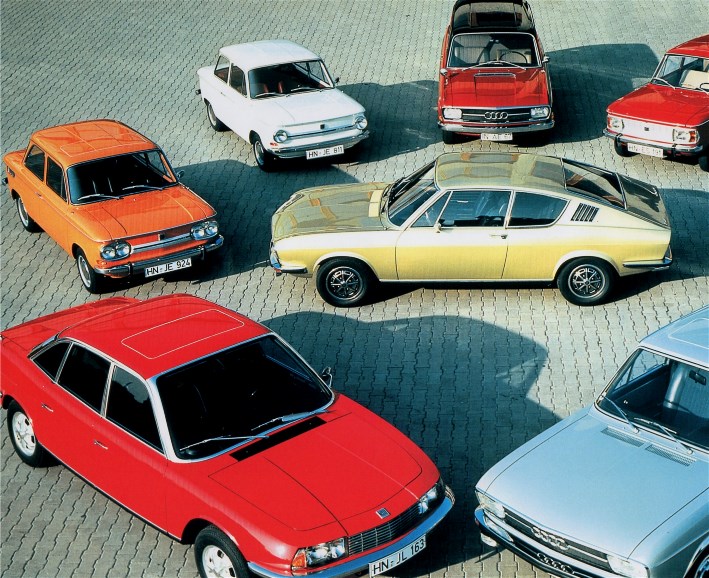
In 1969, at his turn, NSU joins the group Volkswagen to form Audi-NSU. Here the range 1971.

In Eastern Germany, Trabant two-cylinder and Wartburg three-cylinder were made until 1991! Technically, Wartburg was near of DKW F 102.


Saab 96 - 1961

In 1968 the three-cylinder two-stroke engine is replaced by a V4 Ford four-stroke 1500 cm3 then 1700 cm3

DKW Auto-Union VS Saab

At the same age we had Panhard 17, driven also by a 850 cm3 but 2 cylinders flat-twin only and four-stroke cycle engine. Anyway it was the end for these motors become too small for the weight of the car they had to pull. Panhard 17 was 150 kg heavier than the first Dyna in aluminium!
DKW was a trademark of the group Auto-Union, one of the four rings of the logo. Audi, Horch and Wanderer were the three other. DKW, the pioneer of the Front Wheels Drive, was a famous motorbike constructor in the twenties.

DKW 3=6 presented by the famous actress Romy Schneider in 1957

DKW Auto-Union 1000 S coupé

DKW Auto-Union 1000 SP coupé (the little Ford TBird)

1964, the last DWK with bigger 3 cylinder-2 stroke engine 1175 cm3, F102
Available also in 4 doors saloon

In 1965 the group Auto-Union is bought by Volkswagen that replaced trademark DKW by Audi, an old firm of the group. It was because of the image of DKW associated by people to the little blue smoke of their cars (and the smell too). Two-stroke engine is straight away left and replaced by a classical 4 cylinder 1700 cm3 designed by Daimler Benz. Audi is born again!

In 1969, at his turn, NSU joins the group Volkswagen to form Audi-NSU. Here the range 1971.

In Eastern Germany, Trabant two-cylinder and Wartburg three-cylinder were made until 1991! Technically, Wartburg was near of DKW F 102.


Saab 96 - 1961

In 1968 the three-cylinder two-stroke engine is replaced by a V4 Ford four-stroke 1500 cm3 then 1700 cm3

DKW Auto-Union VS Saab

At the same age we had Panhard 17, driven also by a 850 cm3 but 2 cylinders flat-twin only and four-stroke cycle engine. Anyway it was the end for these motors become too small for the weight of the car they had to pull. Panhard 17 was 150 kg heavier than the first Dyna in aluminium!
Last edited:
jeanlouis
V.I.P Member
- Joined
- May 22, 2009
- Messages
- 13,549
- Reaction score
- 25,310
- Points
- 113
Pierre Louys photographies
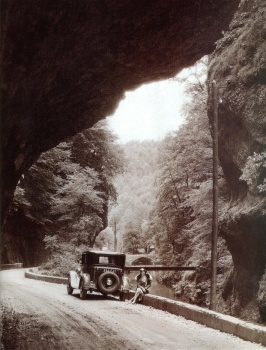







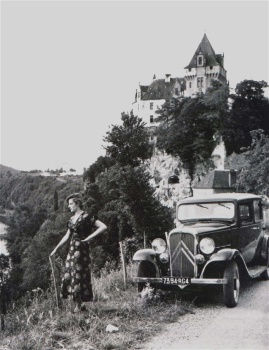














Pierre Louys began at Citroën in 1920 to realize some bodies car drawings and various poster projects. Later he had to manage all the advertising department and also the calendar, one page by day for the company agents (see the photo above). He travelled every year with a model and an assistant for shooting the last Citroën models in Corsica or in the South of France.























Pierre Louys began at Citroën in 1920 to realize some bodies car drawings and various poster projects. Later he had to manage all the advertising department and also the calendar, one page by day for the company agents (see the photo above). He travelled every year with a model and an assistant for shooting the last Citroën models in Corsica or in the South of France.
Last edited:
jeanlouis
V.I.P Member
- Joined
- May 22, 2009
- Messages
- 13,549
- Reaction score
- 25,310
- Points
- 113
TALBOT-DARRACQ, TALBOT-LAGO, TALBOT-PEUGEOT
Originally Talbot is a Franco-British constructor from the group STD (Sunbeam-Talbot-Darracq). In 1934 the firm was bought by the engineer Anthony Lago who associated his name to Talbot.

Talbot 95 - 1933


Talbot-Lago SS - 1938 Bodyworked by Figoni-Falaschi named "goutte d'eau"



Talbot-Lago T23 Major - 1938
On this photo we can see the gearshift that control the pre-selective gearbox 4 speeds Wilson. First you selected your speed then you shifted it only after having strongly push on the clutch pedal. I saw this system on some bus a long time ago. Speeds shifted easily without noise but the gearbox was very heavy, expensive and warmed a lot.

Talbot-Lago T26C - 1950


Talbot-Lago Grand Sport T26 - 1954
Originally Talbot is a Franco-British constructor from the group STD (Sunbeam-Talbot-Darracq). In 1934 the firm was bought by the engineer Anthony Lago who associated his name to Talbot.

Talbot 95 - 1933


Talbot-Lago SS - 1938 Bodyworked by Figoni-Falaschi named "goutte d'eau"



Talbot-Lago T23 Major - 1938
On this photo we can see the gearshift that control the pre-selective gearbox 4 speeds Wilson. First you selected your speed then you shifted it only after having strongly push on the clutch pedal. I saw this system on some bus a long time ago. Speeds shifted easily without noise but the gearbox was very heavy, expensive and warmed a lot.

Talbot-Lago T26C - 1950


Talbot-Lago Grand Sport T26 - 1954
Last edited:
jeanlouis
V.I.P Member
- Joined
- May 22, 2009
- Messages
- 13,549
- Reaction score
- 25,310
- Points
- 113

Four cut-drawings Talbot engine with side camshaft
1 - side valves
2 - over head valves
3 - hemispheric head cylinder with one side camshaft
4 - hemispheric head cylinder with two side camshafts (perfect symetry!)

6 cylinder T150C with hemispheric head cylinder one side camshaft

4 cylinder engine 2.5 liter double side camshafts. The design is like a double over head camshafts motor. Under the cover we find "only" a row of rockers.
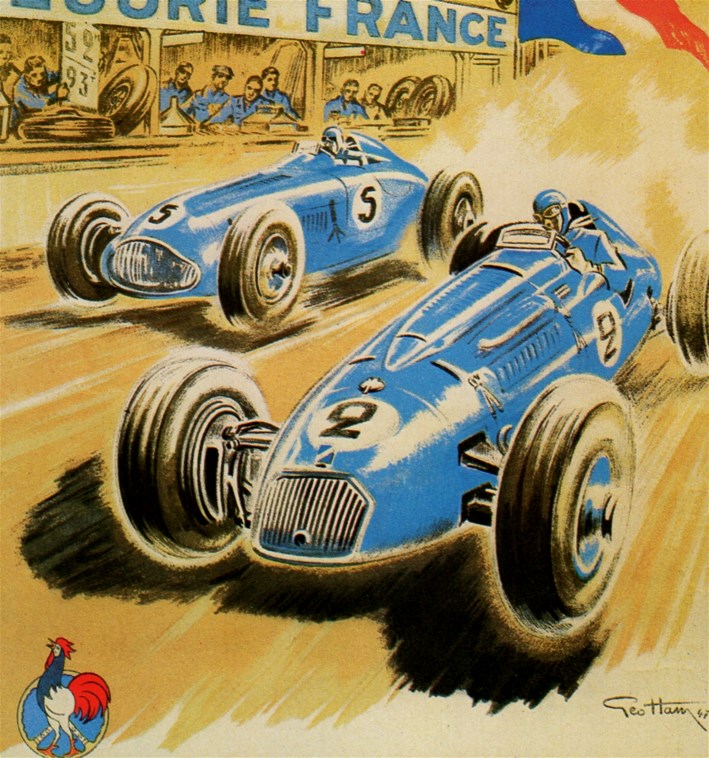

Drawings of the artist Geo Ham



1958 : Simca bought Talbot and it was the end of the famous constructor.
In 1979 Peugeot, who had bought the european subsidiaries Chrysler (France, UK, Spain), renamed Talbot these firms. Unsuccessfully, Talbot spirit was gone !
Last edited:
Similar threads
- Replies
- 10
- Views
- 743
- Replies
- 1
- Views
- 528


 stances.
stances.





